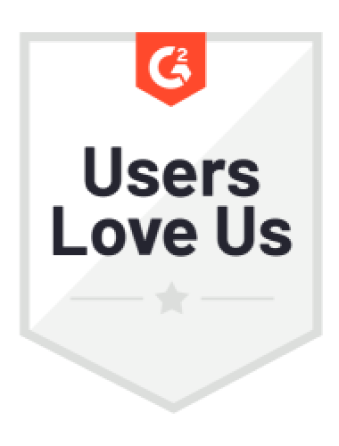The Ultimate Guide to Secure Data Catalog Solutions
Discover the essential tips and best practices for implementing secure data catalog solutions in your organization with our comprehensive guide.

In today's digital age, organizations are dealing with an enormous amount of data. From customer information to sales data, the sheer volume and complexity of data can be overwhelming. This is where data catalog solutions come into play. In this comprehensive guide, we will delve into the world of secure data catalog solutions, exploring their importance, key features, and how to choose the right solution for your business. We will also provide insights on implementing and maintaining your data catalog effectively.
Understanding Data Catalog Solutions
What is a Data Catalog?
A data catalog is a centralized repository that organizes and categorizes an organization's data assets. It acts as a cataloging system, providing a detailed inventory of all data sources, databases, and data sets available within an organization. The catalog serves as a single point of reference for data discovery, making it easier for data users to find relevant data quickly.
Furthermore, a data catalog goes beyond just listing data assets; it also includes metadata such as data lineage, data quality, and usage statistics. This additional information helps data users understand the context and relevance of each data asset, enabling them to make more informed decisions.
Importance of Data Catalog in Business
In today's fast-paced business landscape, data is the lifeblood of any organization. A data catalog plays a vital role in enabling efficient data management and governance. It aids in data discovery, enhances data accessibility, and promotes data collaboration among teams. By providing a clear understanding of available data assets, a data catalog empowers businesses to make better-informed decisions, drive innovation, and gain a competitive edge.
Moreover, a data catalog also supports regulatory compliance by ensuring data lineage and provenance are well-documented. This is crucial for industries with strict data governance requirements, such as finance and healthcare. By maintaining a comprehensive data catalog, organizations can easily track data usage, monitor changes, and demonstrate compliance during audits.
Key Features of Secure Data Catalog Solutions
Data Protection and Privacy
When it comes to data, security is paramount. A secure data catalog solution implements robust security measures to ensure the confidentiality, integrity, and availability of your data. It should offer features like access control, encryption, and auditing capabilities to protect sensitive information from unauthorized access or breaches.
In addition to these fundamental security measures, advanced data catalog solutions often employ techniques such as data masking and tokenization to further enhance data protection. Data masking replaces sensitive information with fictitious data, while tokenization substitutes sensitive data with unique identifiers, adding an extra layer of security. These methods help organizations comply with data privacy regulations and safeguard critical information from potential threats.
Scalability and Performance
As your organization grows, so does the volume and variety of data. A reliable data catalog solution should be highly scalable to accommodate increasing data volumes. It should also deliver optimal performance, enabling fast data search, retrieval, and analysis even with large datasets. Look for solutions that leverage modern technologies and distributed architectures to handle the demands of big data efficiently.
Moreover, scalability goes beyond just handling more data. A truly scalable data catalog solution should be able to seamlessly adapt to changing business needs and evolving technological landscapes. This flexibility ensures that the catalog can grow alongside your organization, supporting new data sources, applications, and analytical tools without compromising performance.
Data Integration and Interoperability
A robust data catalog solution allows seamless integration with various data sources, databases, and platforms. It should support different data formats and protocols, promoting interoperability across your data ecosystem. This enables efficient data ingestion, synchronization, and synchronization, ensuring the catalog stays up to date with the latest data from multiple sources.
Furthermore, modern data catalog solutions often incorporate machine learning and artificial intelligence capabilities to automate data integration processes. By leveraging these technologies, organizations can streamline data discovery, classification, and mapping tasks, accelerating the integration of new data sources and enhancing overall data interoperability. This intelligent automation not only saves time and resources but also improves data accuracy and consistency across the entire data landscape.
Choosing the Right Data Catalog Solution
Assessing Your Business Needs
Selecting the right data catalog solution starts with a thorough assessment of your organization's requirements. Identify your data catalog goals, understand the types of data you deal with, and the specific challenges you face. Consider factors such as the size of your organization, the complexity of your data landscape, and the level of security and compliance you require.
Furthermore, it is crucial to involve key stakeholders from different departments in this assessment process to ensure that the chosen data catalog solution aligns with the overall business strategy. By gathering input from various teams, such as IT, data analytics, and compliance, you can better understand the diverse needs and perspectives within your organization.
Evaluating Vendor Capabilities
When evaluating data catalog vendors, consider their experience, reputation, and track record in delivering secure and reliable solutions. Look for vendors who have a deep understanding of your industry and demonstrate a commitment to data privacy and protection. Assess their product features, user interface, and integration capabilities. Request demos and customer references to gain insights into their solution's ease of use, performance, and customer satisfaction.
In addition, it is beneficial to inquire about the vendor's roadmap for future product development and how they plan to adapt to emerging technologies and evolving data governance requirements. Understanding the vendor's long-term vision can help you assess their commitment to innovation and staying ahead of industry trends.
Cost Considerations
While cost should not be the sole factor in your decision-making process, it's essential to evaluate the total cost of ownership of a data catalog solution. Consider factors like licensing fees, implementation costs, maintenance fees, and any additional costs associated with scaling or customization. Assess the value the solution brings to your organization in terms of increased efficiency, improved data governance, and enhanced decision-making capabilities.
Moreover, consider the potential cost savings and ROI that a data catalog solution can provide in terms of reduced data redundancy, improved data quality, and streamlined data discovery processes. By conducting a thorough cost-benefit analysis, you can make an informed decision that aligns with your organization's budget and strategic objectives.
Implementing Data Catalog Solutions
Steps for Successful Implementation
Successful data catalog implementation requires careful planning and execution. Start by identifying your implementation team and define clear objectives. Identify your data sources and outline the data ingestion and integration processes. Clean and organize your data before populating the catalog to ensure accuracy and completeness. Establish data governance processes and policies and train your teams on using the data catalog effectively.
Furthermore, it is crucial to involve key stakeholders from various departments in the implementation process to ensure that the data catalog meets the needs of all users. Conduct thorough testing and validation of the catalog to identify any potential issues before full deployment. Consider implementing metadata management practices to enhance data discoverability and improve data lineage tracking within the catalog.
Overcoming Potential Challenges
Like any technology implementation, data catalog solutions come with their challenges. These may include data quality issues, resistance to change, data governance complexities, and technical integration hurdles. Anticipate these challenges and create strategies to address them effectively. Foster a culture of data-driven decision-making within your organization, provide ongoing support to users, and continuously monitor and refine your data catalog to ensure it remains relevant and valuable.
Additionally, consider establishing a feedback loop with users to gather insights on their experience with the data catalog and identify areas for improvement. Regularly review and update your data catalog to incorporate new data sources, address changing business requirements, and enhance overall usability. By proactively addressing challenges and continuously improving your data catalog, you can maximize its impact on your organization's data management processes.
Maintaining and Updating Your Data Catalog
Regular Audits and Reviews
Keeping your data catalog accurate and up to date is crucial for its effectiveness. Schedule regular audits to identify any inconsistencies, outdated information, or duplications within the catalog. Establish review processes to validate the quality and relevance of data sources periodically. Encourage user feedback and continuously evaluate the effectiveness of your data catalog in meeting your organization's evolving needs.
Moreover, during audits, it is essential to involve key stakeholders from different departments to ensure that the data catalog aligns with various business requirements. By engaging a diverse group of individuals in the audit process, you can gather valuable insights and perspectives that can enhance the overall quality and usability of the catalog.
Training and Skill Development
To fully leverage the power of your data catalog, ensure your teams are well-trained and equipped with the necessary skills. Offer comprehensive training programs to educate users on how to effectively navigate and utilize the catalog. Promote data literacy within your organization, providing resources and opportunities for skill development. This will empower your teams to make informed decisions based on reliable and accurate data.
In addition to formal training programs, consider implementing a mentorship or knowledge-sharing initiative where experienced users of the data catalog can provide guidance and support to newer team members. This peer-to-peer learning approach can foster a culture of collaboration and continuous improvement within your organization, leading to increased efficiency and effectiveness in data utilization.
By understanding the importance, key features, and implementation best practices of secure data catalog solutions, organizations can harness the power of their data, drive innovation, and gain a competitive edge in today's data-driven business landscape. Choose the right solution, implement it effectively, and keep maintaining and updating your data catalog to unlock the full potential of your organization's data assets.Ready to elevate your data management and analytics to new heights? CastorDoc is your ultimate partner in navigating the complex world of data governance with ease. With its advanced cataloging, lineage capabilities, and a user-friendly AI assistant, CastorDoc is designed to empower your teams to enable self-service analytics effectively. Embrace the future of data governance and transform how your business accesses, understands, and utilizes data. Try CastorDoc today and unlock the full potential of your organization's data assets for informed decision-making and a competitive edge.
You might also like
Get in Touch to Learn More



“[I like] The easy to use interface and the speed of finding the relevant assets that you're looking for in your database. I also really enjoy the score given to each table, [which] lets you prioritize the results of your queries by how often certain data is used.” - Michal P., Head of Data




.png)
%202.png)

%202.png)

%202.png)
%202.png)
%202.png)

%202.png)


%202.png)

%202.png)


.png)

